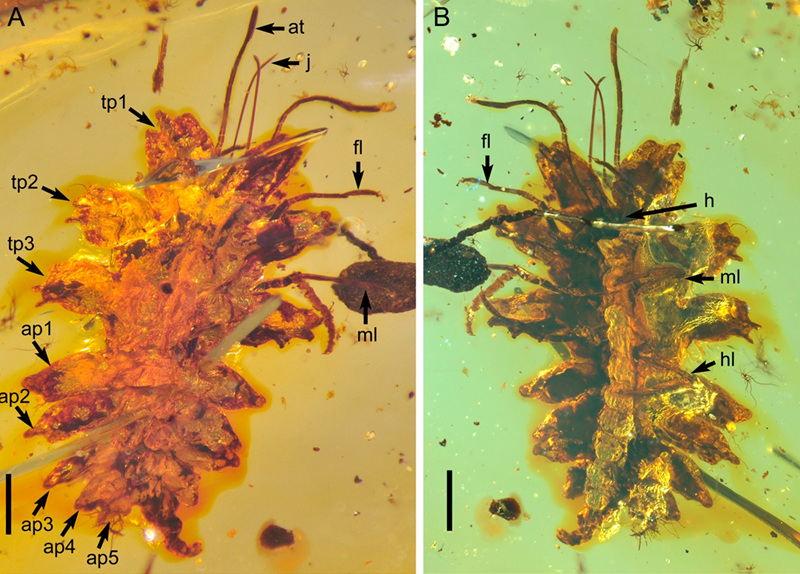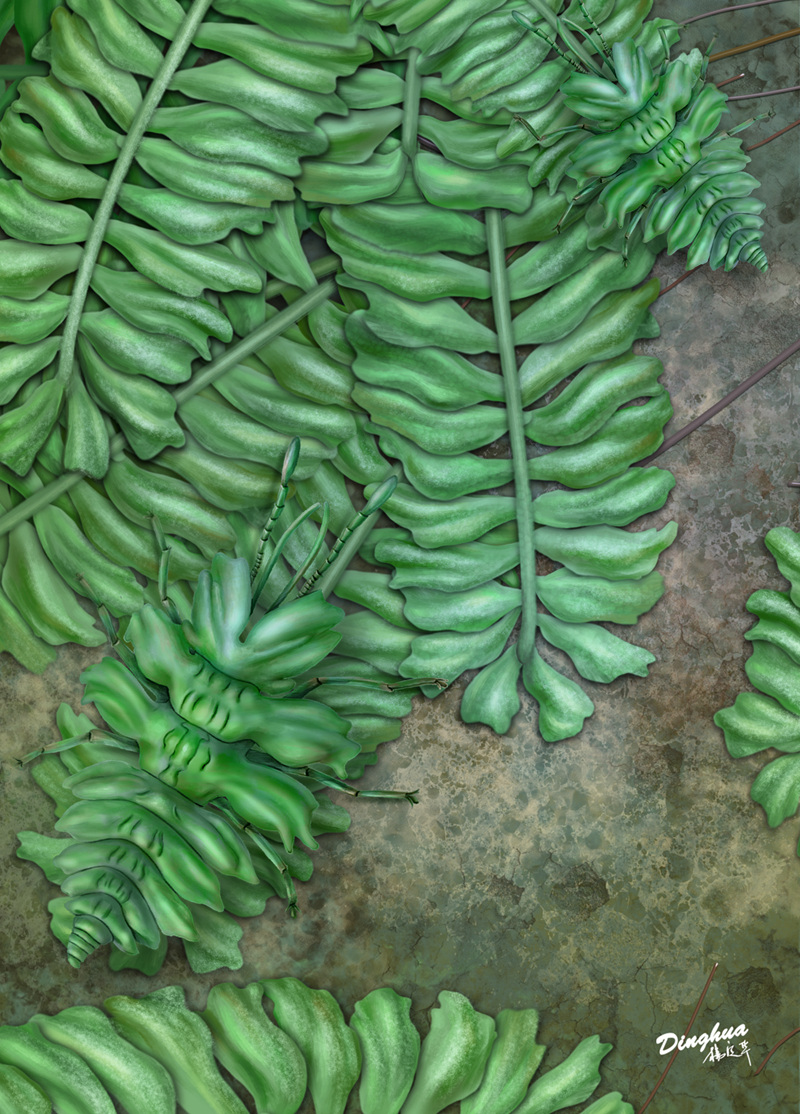Camouflage and mimicry are pervasive throughout the biological world as part of the usual interactions between predators and their prey, allowing both to avoid detection. Among insects, the icons of mimicry include familiar stick and leaf insects, leaf-like moths or katydids. Liverworts are among the earliest terrestrial plants, and they have been widespread since the Paleozoic. However, mimicry between insects and liverworts is extremely rare in both modern and fossil ecosystems.
Recently, researchers from China Agricultural University, Nanjing Institute of Geology and Palaeontology, Chinese Academy of Sciences and their colleagues reported a new lacewing species (green lacewing larvae) based on two larvae from the Cretaceous Burmese amber (approximately 100 million years old). These larvae are anatomically modified to mimic coeval liverworts. This discovery represents the first record of liverwort mimicry by fossil insects and brings to light an evolutionary novelty, both in terms of morphological specialization as well as plant-insect interactions. The research was recently published in Current Biology on April 26, 2018.
These larvae have broadly foliate lateral plates on their thorax and abdomen. It is the only species known among lacewings with distinctive foliate lobes on the larval body. Such morphological modifications grossly match some coeval liverworts. Therefore, the new larvae are the first example of direct mimicry in lacewing larvae.
The morphological specialization in the new chrysopoid larva is unique and is unknown among any living or fossil lacewings. While the anatomy of these larvae allowed them to avoid detection, the lack of setae or other anatomical elements for entangling debris as camouflage means their sole defense was its mimicry, and it could have been a stealthy hunter like living and other fossil Chrysopoidea or been an ambush predator aided by its disguise. The present fossils demonstrate a hitherto unknown life-history strategy among these “wolf in sheep’s clothing” predators, one that apparently evolved from a camouflaging ancestor but did not persist within the lineage.
Liverworts are a diverse group distributed throughout the world today, including approximately 9,000 extant species. Liverworts have been diverse since the start of the Late Cretaceous, including in the Burmese amber forest, which was a typical wet, tropical rainforest. Like their extant counterparts, Cretaceous liverworts grew on the leaves and bark of trees as well as on other plant surfaces. Therefore, the larvae most probably lived on trees densely covered by liverworts, with their liverwort mimicry aiding their survival.
This research was supported by the National Natural Science Foundation of China and the Chinese Academy of Sciences.
Reference: Liu Xingyue*, Shi Gongle, Xia Fangyuan, Lu Xiumei, Wang Bo*, Engel M.S.* (2018) Liverwort mimesis in a Cretaceous lacewing larva. Current Biology, https://doi.org/10.1016/j.cub.2018.03.060.

New green lacewing larva from Burmese amber.

New green lacewing larva and potential model plants from Burmese amber. (B, E, G are larvae, the others are livervorts).

Ecological reconstruction.
